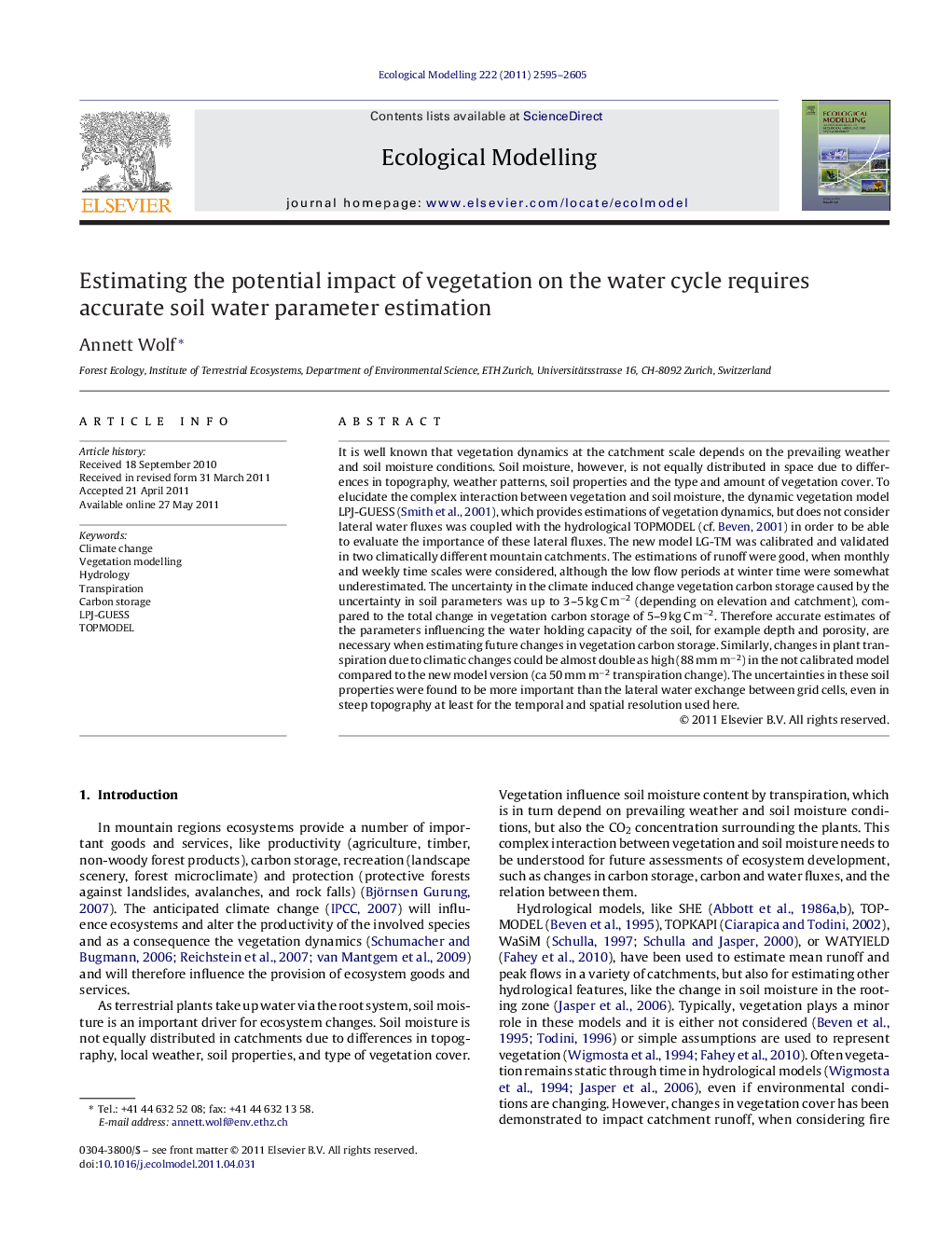| Article ID | Journal | Published Year | Pages | File Type |
|---|---|---|---|---|
| 4376778 | Ecological Modelling | 2011 | 11 Pages |
It is well known that vegetation dynamics at the catchment scale depends on the prevailing weather and soil moisture conditions. Soil moisture, however, is not equally distributed in space due to differences in topography, weather patterns, soil properties and the type and amount of vegetation cover. To elucidate the complex interaction between vegetation and soil moisture, the dynamic vegetation model LPJ-GUESS (Smith et al., 2001), which provides estimations of vegetation dynamics, but does not consider lateral water fluxes was coupled with the hydrological TOPMODEL (cf. Beven, 2001) in order to be able to evaluate the importance of these lateral fluxes. The new model LG-TM was calibrated and validated in two climatically different mountain catchments. The estimations of runoff were good, when monthly and weekly time scales were considered, although the low flow periods at winter time were somewhat underestimated. The uncertainty in the climate induced change vegetation carbon storage caused by the uncertainty in soil parameters was up to 3–5 kg C m−2 (depending on elevation and catchment), compared to the total change in vegetation carbon storage of 5–9 kg C m−2. Therefore accurate estimates of the parameters influencing the water holding capacity of the soil, for example depth and porosity, are necessary when estimating future changes in vegetation carbon storage. Similarly, changes in plant transpiration due to climatic changes could be almost double as high (88 mm m−2) in the not calibrated model compared to the new model version (ca 50 mm m−2 transpiration change). The uncertainties in these soil properties were found to be more important than the lateral water exchange between grid cells, even in steep topography at least for the temporal and spatial resolution used here.
► The uncertainty in the climate induced change vegetation carbon storage caused due to soil parameters was up to 3–5 kg C m−2, about half of the total change in vegetation carbon storage of 5–9 kg C m−2. ► Climate induced changes in plant transpiration could be about double as high in the not calibrated model compared to the new model LG-TM. ► Accurate estimates of the parameters influencing the water holding capacity are essential.
